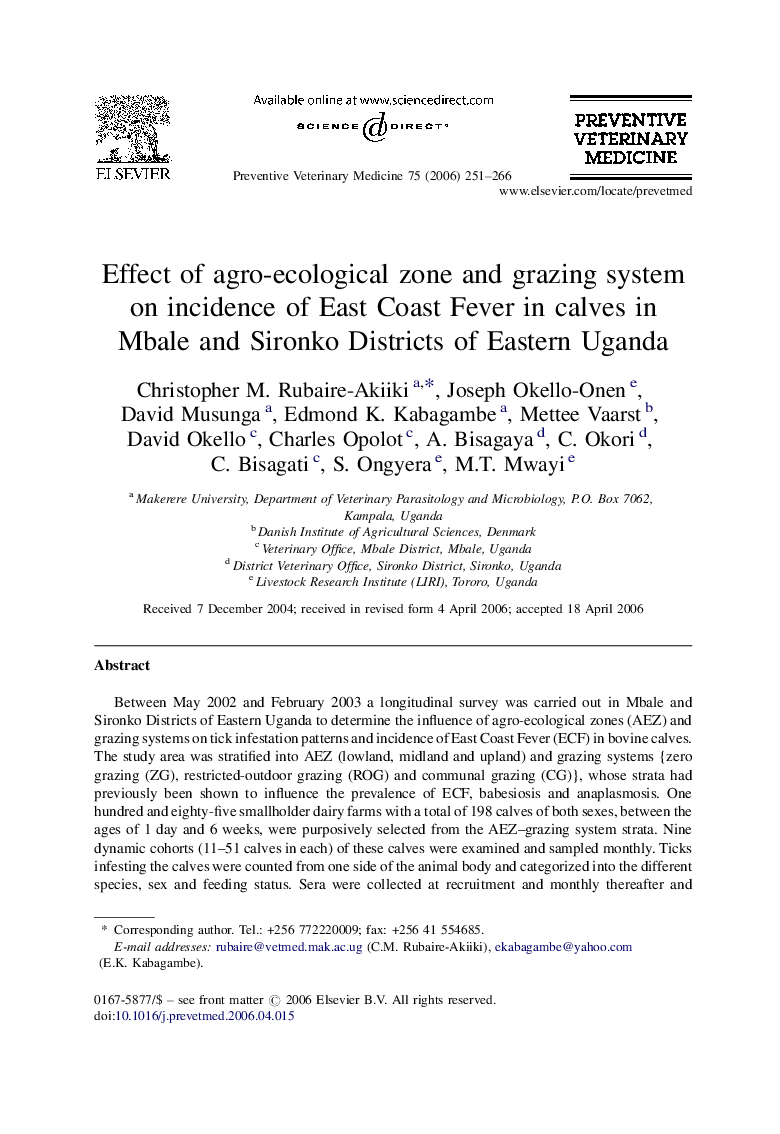| کد مقاله | کد نشریه | سال انتشار | مقاله انگلیسی | نسخه تمام متن |
|---|---|---|---|---|
| 2453715 | 1554232 | 2006 | 16 صفحه PDF | دانلود رایگان |

Between May 2002 and February 2003 a longitudinal survey was carried out in Mbale and Sironko Districts of Eastern Uganda to determine the influence of agro-ecological zones (AEZ) and grazing systems on tick infestation patterns and incidence of East Coast Fever (ECF) in bovine calves. The study area was stratified into AEZ (lowland, midland and upland) and grazing systems {zero grazing (ZG), restricted-outdoor grazing (ROG) and communal grazing (CG)}, whose strata had previously been shown to influence the prevalence of ECF, babesiosis and anaplasmosis. One hundred and eighty-five smallholder dairy farms with a total of 198 calves of both sexes, between the ages of 1 day and 6 weeks, were purposively selected from the AEZ–grazing system strata. Nine dynamic cohorts (11–51 calves in each) of these calves were examined and sampled monthly. Ticks infesting the calves were counted from one side of the animal body and categorized into the different species, sex and feeding status. Sera were collected at recruitment and monthly thereafter and antibodies against Theileria parva, T. mutans, Babesia bigemina, B. bovis and Anaplasma marginale were measured using ELISA. Tick challenge (total and specific) varied with AEZ and grazing system. The risk of infection with T. parva was higher in the lowland zone compared to the upland zone (hazard ratio (HR) = 2.59; 95% CI: 1.00–6.34). The risk of infection with T. parva was higher in the CG system than the ZG system (HR = 10.00; 95% CI: 3.61–27.92). The incidence risk for sero-conversion, over the 10 months study period, was 62, 16 and 9% in the lowland, midland and upland zones, respectively. Ninety-eight percent of the calves in lowland-CG stratum sero-converted by the age of 6 months, while 56 and 8% did so in the lowland-ROG and the lowland-ZG stratum, respectively. The results of this study show the need to consider farm circumstances and the variation in ECF risk, both spatially and temporally when designing control strategies for ECF.
Journal: Preventive Veterinary Medicine - Volume 75, Issues 3–4, 17 August 2006, Pages 251–266